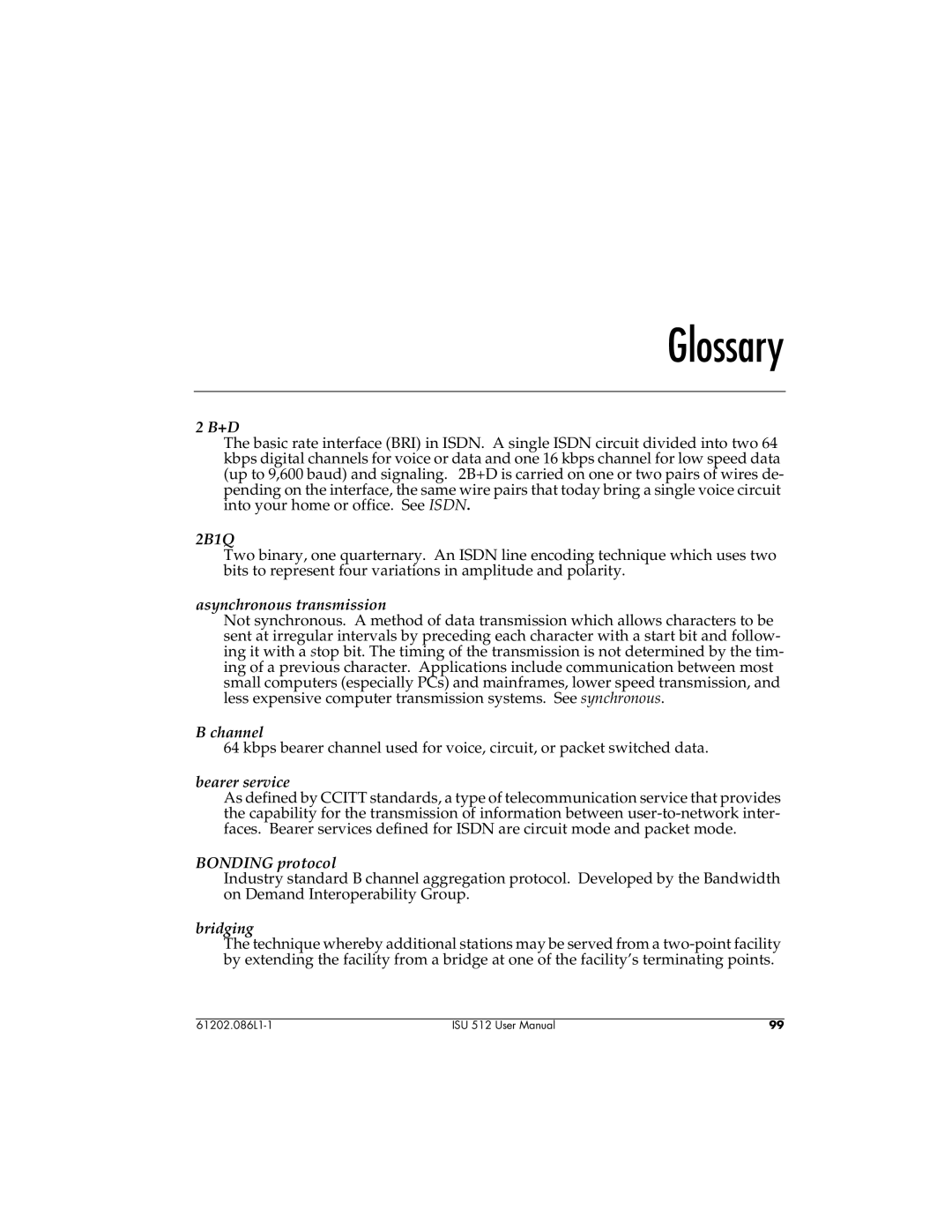Glossary
2 B+D
The basic rate interface (BRI) in ISDN. A single ISDN circuit divided into two 64 kbps digital channels for voice or data and one 16 kbps channel for low speed data (up to 9,600 baud) and signaling. 2B+D is carried on one or two pairs of wires de- pending on the interface, the same wire pairs that today bring a single voice circuit into your home or office. See ISDN.
2B1Q
Two binary, one quarternary. An ISDN line encoding technique which uses two bits to represent four variations in amplitude and polarity.
asynchronous transmission
Not synchronous. A method of data transmission which allows characters to be sent at irregular intervals by preceding each character with a start bit and follow- ing it with a stop bit. The timing of the transmission is not determined by the tim- ing of a previous character. Applications include communication between most small computers (especially PCs) and mainframes, lower speed transmission, and less expensive computer transmission systems. See synchronous.
B channel
64 kbps bearer channel used for voice, circuit, or packet switched data.
bearer service
As defined by CCITT standards, a type of telecommunication service that provides the capability for the transmission of information between
BONDING protocol
Industry standard B channel aggregation protocol. Developed by the Bandwidth on Demand Interoperability Group.
bridging
The technique whereby additional stations may be served from a
ISU 512 User Manual | 99 |
